Shaping the Future | Plastic Molding in Auto Industry
CBM Plastics USA
In today’s automotive industry, plastic injection molding plays a pivotal role in revolutionizing the production of car components. Gone are the days when metal ruled the production lines; now, plastics have transformed the landscape, offering lightweight, durable, and cost-effective solutions for various automotive applications. But how did this shift happen, and what are the benefits of embracing the role of plastic injection molding in the automotive industry? Let’s embark on a journey to explore the wonders of this innovative manufacturing process and its impact on the automotive industry.
For Plastic Injection Molding in Automotive Quotes:
Core Insights
- Plastic injection molding has revolutionized the automotive industry, providing cost-effective and lightweight components with precision and quality.
- Common materials used for plastic injection molding in automotive applications include polypropylene, ABS, and nylon due to their specific properties.
- CBM Plastics is a leader in plastic injection molding for the automotive industry, specializing in the design & development of parts & assembly of components.
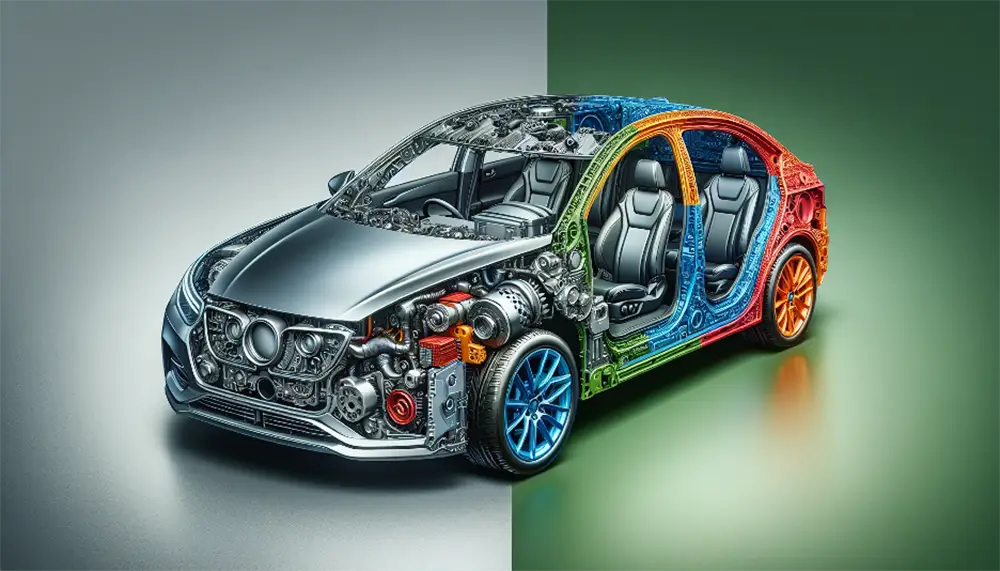
The Shift from Metal to Plastic in the Automotive Industry
Lightweight and fuel-efficient vehicles have become a necessity in the global automotive market. Plastic injection molding has emerged as a game-changer to meet this demand, paving the way for a new era of automotive manufacturing by replacing heavy metal components with their lighter plastic counterparts.
The transition from metal to plastic components started in the 1940s and 1950s. However, it was in the late 1970s and early 1980s that injection molding became popular for producing plastic car parts, initially focusing on decorative elements. The advantages of using plastic materials in the automotive industry include:
- High strength
- Toughness
- Design flexibility
- Cost-effectiveness
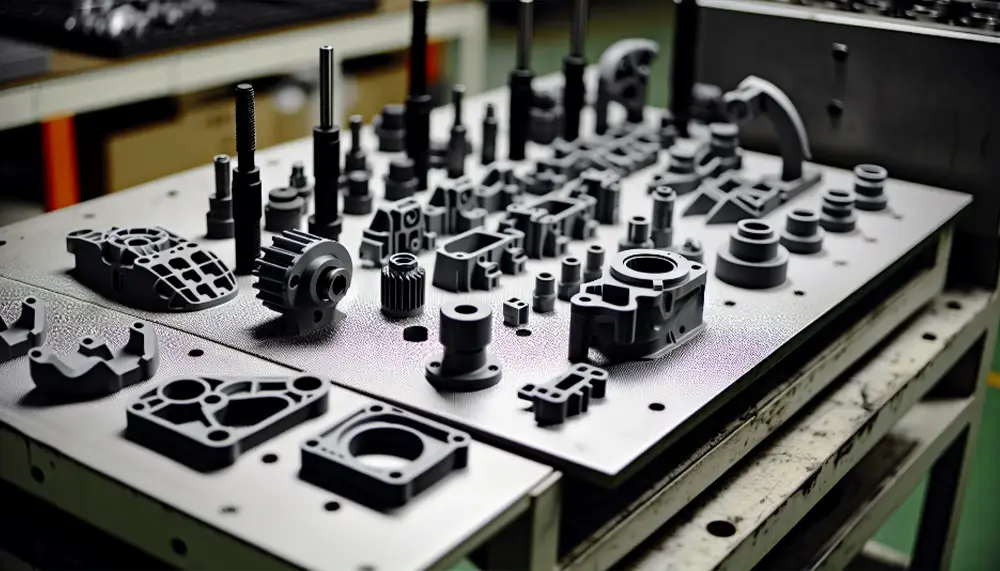
These advantages have led to the widespread adoption of injection molding as a manufacturing process for plastic car parts.
Reasons for the Shift
The primary drivers for the shift towards plastic components were the need for lighter, more fuel-efficient vehicles and the versatility of plastic materials. This replacement of heavier metal parts with lightweight plastic components results in improved fuel efficiency, performance enhancement, emission reduction, and increased safety.
Plastics, a type of plastic material, also offer multiple advantages over metals, including lower weight and material cost, reduced manufacturing process cost, and the ability to eliminate secondary finish operations.
Timeline of the Transition
The transition from metal to plastic began in the 1940s and 1950s, with injection molding becoming popular for producing plastic car parts in the late 1970s and early 1980s. Initially, decorative elements were the first plastic car parts to be introduced, but as the technology and materials advanced, more structural components made from plastics emerged, offering improved fuel efficiency and reduced production costs.
Currently, the automotive injection molding process, utilizing injection molding machines, is the prevalent production method for manufacturing a diverse range of plastic components, including injection molded parts, specifically injection molding automotive parts.
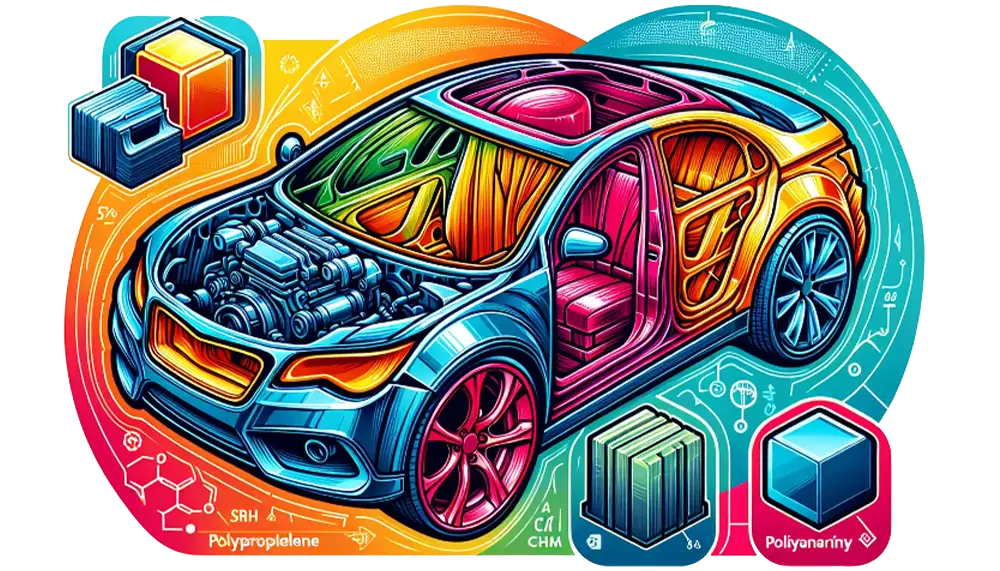
Advantages of Plastic Injection Molding for Automotive Applications
Plastic injection molding offers numerous benefits for automotive applications, such as:
- Cost-effectiveness
- Precision
- Quality
- Lightweight components
The process involves melting plastic in specialized barrels, compressing and injecting it into pre-prepared molds, and producing precisely manufactured components in a timely manner. With the ability to create complex parts with high precision and repeatability, injection molding has become an indispensable tool in the automotive industry.
A primary advantage of plastic injection molding in Illinois in the automotive industry is cost efficiency. This process offers more rapid production rates and reduced material wastage compared to conventional metal manufacturing methods. Moreover, injection molding allows for the production of parts with tight tolerances and superior surface finishes, ensuring that automotive manufacturers can create high-quality components that meet the ever-increasing demands of the market.
Cost-Effectiveness
Injection molding is a highly cost-effective manufacturing process provides the following benefits:
- Faster production rates
- Lower material wastage
- Improved efficiency
- Decreased labor costs
The production speed contributes to cost-effectiveness by offering faster production cycles.
Also, the cost per part declines as production volume increases, rendering injection molding a financially feasible manufacturing method for large-scale automotive applications.
Precision and Quality
The high precision and quality of parts produced through injection molding are critical factors for their effective functioning in automotive systems. Injection molding is capable of producing plastic parts with tight tolerances, ensuring that components fit together precisely, operate correctly, and contribute to the overall efficiency and dependability of the automotive system.
Also, the process has the potential to create intricate, highly detailed parts with internal cavities, which heightens the appeal of injection molding in automotive applications.
Durable and Lightweight
Plastic components produced through injection molding have several advantages:
- They are durable and long-lasting.
- They are lightweight, contributing to fuel efficiency and vehicle performance.
- The reduced weight of plastic components allows for a lighter overall vehicle, resulting in improved fuel efficiency, performance, and safety.
Research has shown that a 10% reduction in vehicle weight can lead to a 6% increase in fuel efficiency. Hence, the use of plastic auto parts can aid in reducing the overall weight of the vehicle, leading to enhanced performance and fuel economy.
Common Materials Used in Automotive Plastic Injection Molding
In automotive plastic injection molding, several materials are commonly used, including polypropylene (PP), acrylonitrile butadiene styrene (ABS), and polyamide/nylon (PA). The selection of these materials is based on their specific properties, including resistance to moisture and chemicals, non-toxicity, low density, and heat resistance. The choice of material depends on the specific requirements of the automotive application and the desired characteristics of the final product.
Each material provides unique advantages, making it suitable for various automotive applications. For instance:
- Polypropylene, due to its resistance to water, chemicals, and UV light, is often used for high-intensity exterior car parts.
- Acrylonitrile butadiene styrene is a durable plastic used for both injection molding and 3D printing in automotive applications, including dashboards and covers.
- Polyamide/nylon is employed for components such as bushes and bearings, given its advantageous abrasion and chemical resistance.
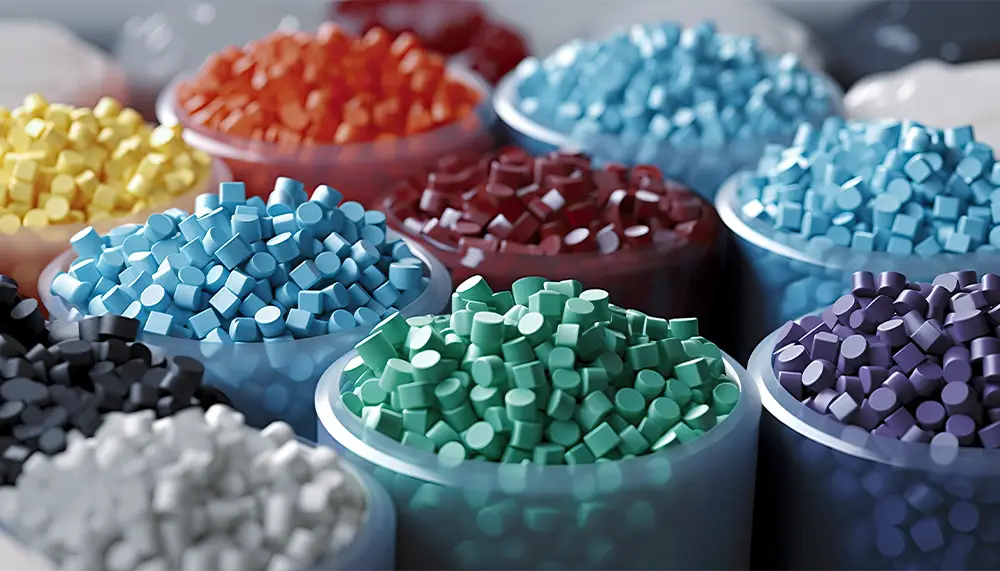
Polypropylene (PP)
Polypropylene is a versatile material used in automotive plastic injection molding due to its resistance to moisture and chemicals, non-toxicity, low density, and heat resistance. Its lightweight nature makes it an ideal material for producing high-intensity exterior car parts, such as fenders, grilles, and bumpers, while also contributing to improved fuel efficiency and vehicle performance.
Additionally, its ease of processing and capability to be molded into intricate shapes make it a favored choice for a range of automotive applications.
Acrylonitrile Butadiene Styrene (ABS)
Acrylonitrile butadiene styrene (ABS) is a thermoplastic known for its lightweight, strong, and impact-resistant properties, making it an ideal material for automotive applications. ABS is easy to process and can be molded into complex shapes, such as dashboards, door panels, and headlight covers. Its resistance to corrosion, heat, and chemicals further contributes to its popularity in the automotive industry.
Aside from injection molding, ABS is also utilized in 3D printing for automotive applications, demonstrating its versatility in producing a broad range of components.
Polyamide (PA)/Nylon
Polyamide/nylon is a robust, lightweight, and resilient material that is resistant to abrasion and corrosion, making it a suitable material for automotive applications. It is impervious to chemicals, heat, and moisture, allowing it to withstand the harsh conditions often encountered under the hood of a vehicle. Its straightforward processing and ability to be molded into intricate shapes make polyamide/nylon a popular choice for automotive plastic injection molding, particularly for components such as suspension bushings, engine components, and electrical kits.

Injection Molding Techniques in the Automotive Industry
There are several injection molding techniques utilized in the automotive industry, including thermoplastic, elastomeric, and thermosetting molding. These techniques cater to the specific requirements of various automotive applications, offering unique advantages and capabilities for the production of high-quality plastic components. By selecting the appropriate technique and material for a particular application, automotive manufacturers can ensure the optimal performance and longevity of their products.
Due to its low cost, high production speed, and versatility, thermoplastic injection molding is the most commonly used technique in the automotive industry. Elastomeric injection molding, on the other hand, produces elastomeric parts from rubber and silicone, providing superior shock absorption and vibration-dampening properties. Thermosetting injection molding is used for thermosetting materials, offering advantages over thermoplastic molding in terms of rigidity and dimensional stability, as well as heat resistance.
Thermoplastic Injection Molding
Thermoplastic injection molding is the predominant technique for producing plastic components in the automotive industry due to its low cost, high production speed, and versatility. In this process, plastic pellets are melted and injected into a mold to form their final shape. Common materials used in thermoplastic injection molding include acrylonitrile butadiene styrene (ABS), polyethylene, polycarbonate, and nylon.
Its ability to produce complex parts with high precision and repeatability has made it an indispensable tool in automotive manufacturing.
Elastomeric Injection Molding
Elastomeric injection molding is a specialized process used to fabricate components constructed from elastomeric substances, such as rubber and silicone. This technique is particularly suited for automotive applications that require superior shock absorption and vibration dampening, such as:
- Gaskets
- Seals
- O-rings
- Other rubber components
Elastomeric injection molding utilizes materials like:
- Thermoplastic vulcanizates (TPV)
- Thermoplastic urethanes (TPU)
- Thermoplastic olefins (TPO)
- Styrenic block copolymer (SBC)
- Silicone rubber (LSR and HCR)
Thermosetting Injection Molding
Thermosetting injection molding is an irreversible molding process. It involves injecting malleable forms of plastic into a heated mold, which cures the material, resulting in a solid part. Thermosetting plastics, which undergo cross-linking and solidify upon heating, are required for this process. Unlike thermoplastics, thermosetting plastics cannot be used in a standard thermoplastic injection molding machine.
The automotive industry utilizes various thermosetting materials to produce automotive parts, such as:
- Car molding
- Tail lights
- Grilles
- Bumpers
- Air vents
- Shafts for water pumps
These materials include epoxy, polyester, polyurethane, alkyds, phenolic, and polyimides.
Automotive Plastic Injection Molding Quote | CBM Plastics USA
Applications of Plastic Injection Molding in the Automotive Industry
Plastic injection molding is used for a wide range of automotive applications, including exterior, interior, and under-the-hood components. Ranging from fenders and grilles to dashboard assemblies and suspension parts, injection molding has become an integral part of automotive manufacturing, providing lightweight, durable, and cost-effective solutions for various car components.
The use of plastic injection molding in the automotive industry has revolutionized the production of car components and paved the way for new innovations in automotive design and engineering. By leveraging the benefits of plastic injection molding, automotive manufacturers can continue to push the boundaries of automotive technology, creating safer, more efficient, and environmentally friendly vehicles for the future.
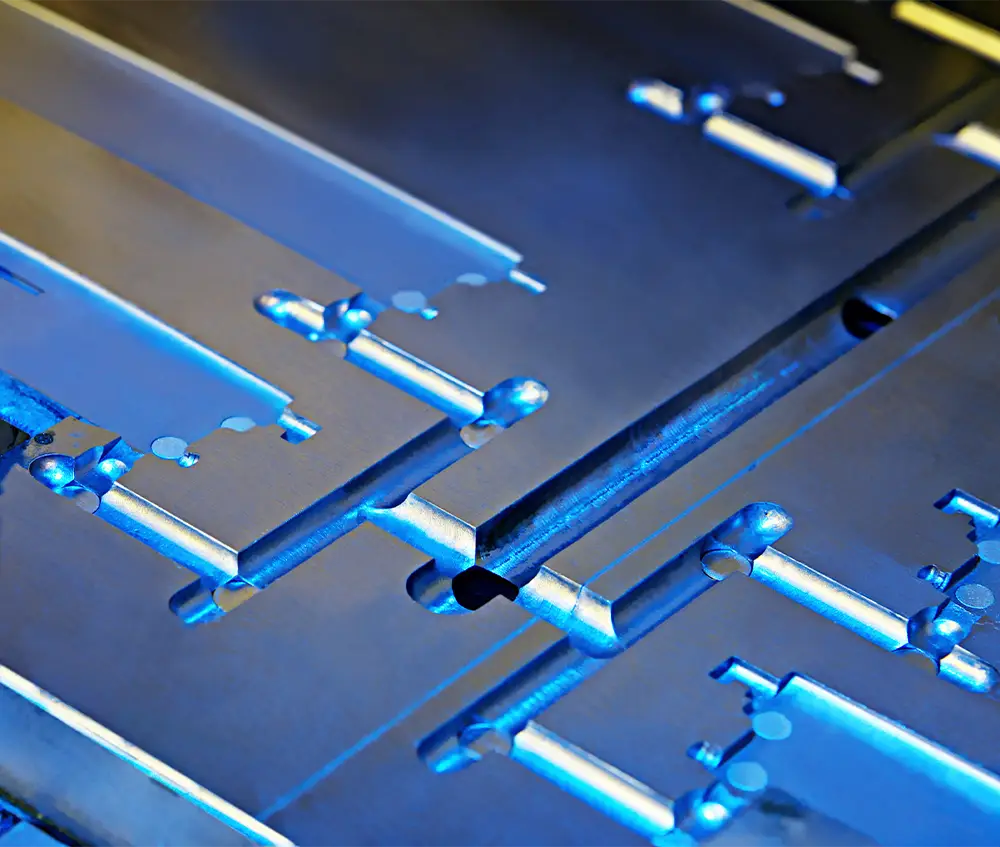
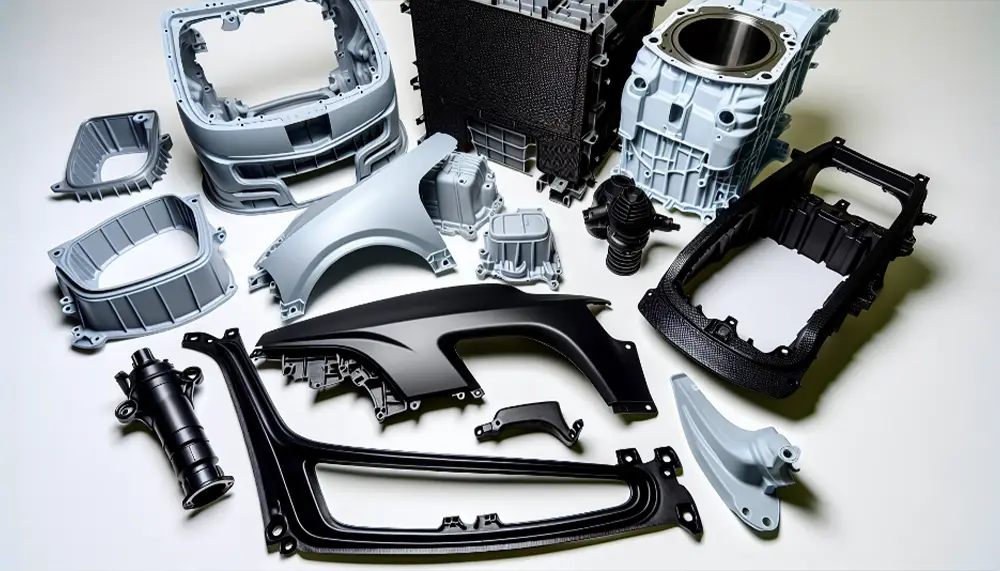
Exterior Components
Injection molding is a popular technique for producing exterior components of automobiles. These may include:
- Fenders
- Grilles
- Bumpers
- Door panels
- Floor rails
- Light housings
- Splash guards
These components are not only lightweight and durable, but they also contribute to the overall aesthetics and aerodynamics of the vehicle.
By utilizing advanced injection molding techniques, automotive manufacturers can produce high-quality exterior components with the following benefits:
- Intricate designs
- Tight tolerances
- Enhanced durability
- Improved aesthetics
These features ensure that their vehicles stand out on the road.
Interior Components
Interior components, such as door handles, dashboard assemblies, and center consoles, are also produced using injection molding. These components not only enhance the aesthetics and comfort of the vehicle, but they also play a crucial role in its functionality and safety.
Injection molding enables automotive manufacturers to produce high-quality interior components with complex shapes and designs, ensuring that drivers and passengers alike can enjoy a comfortable, functional, and visually appealing cabin.
Under-the-Hood Components
Plastic injection molding is used to manufacture under-the-hood components such as sensors, cylinder head covers, and oil pans. Additionally, electrical kits are also produced using this method. These components are critical to the performance and efficiency of the vehicle, and the use of plastic materials in their production offers numerous benefits, such as weight reduction, cost savings, and improved durability.
By utilizing advanced injection molding techniques, automotive manufacturers can continue to innovate and enhance the performance of their vehicles while also reducing their environmental impact.

Future Trends and Innovations in Automotive Plastic Injection Molding
Sustainable Materials
The drive towards sustainability is leading the automotive industry to adopt more environmentally friendly materials in automotive plastic injection molding. Some of these materials include:
- Bioplastics
- Recycled plastics
- Bio-based polymers
- Nanocomposites
These materials are not only more environmentally friendly, but they also offer unique properties and advantages, such as improved durability, lighter weight, and reduced manufacturing costs.
The adoption of sustainable materials in automotive production is expected to grow as manufacturers strive to reduce their environmental impact and meet the increasing demand for greener automotive solutions.
As the automotive industry continues to evolve and adapt to changing consumer needs and environmental considerations, plastic injection molding will undeniably play a significant role in shaping the future of automotive design and production. Several trends and innovations are anticipated to emerge in the coming years, including the use of sustainable materials, advanced manufacturing techniques, and the integration of connected cars with smart materials.
These advancements will not only enhance the efficiency and performance of vehicles, but they will also contribute to:
- the development of more eco-friendly automotive solutions
- the development of more sustainable automotive solutions
- the development of more technologically advanced automotive solutions.
Advanced Manufacturing Techniques
Advanced manufacturing techniques, including rapid tooling technologies like 3D printing and CNC machining, along with smart automation manufacturing, are poised to revolutionize the automotive plastic injection molding process. These technologies not only increase production speed and efficiency but also enhance the precision and quality of the molded components.
By embracing these advanced techniques, automotive manufacturers can continue to innovate and improve their production processes, ensuring that they remain competitive in the fast-paced world of automotive manufacturing.
Connected Cars and Smart Materials
Connected cars and smart materials are set to play a significant role in the future of automotive plastic injection molding. The integration of advanced technologies, such as IoT devices and sensors, will enable vehicles to communicate with each other and their surroundings, providing drivers with real-time information and enhanced safety features.
In addition, the development of smart materials, such as shape-memory polymers and self-healing plastics, will enable automotive manufacturers to create more advanced and intelligent components, further improving vehicle performance and driver experience.
Contact CBM Plastics USA for your automotive injection molding quote.
Let us help you with a custom automotive injection molding quote for your project.
CBM Plastics: A leader in plastic injection molding for the Automotive Industry
With over 25 years of experience in custom plastic injection molding, CBM Plastics is a recognized leader in the automotive industry. As a custom plastic parts manufacturer, CBM Plastics specializes in design and development, delivery of finished parts, and assembly of multiple components, CBM Plastics is committed to providing high-quality, cost-effective solutions to meet the ever-growing demands of the automotive market.
By capitalizing on its expertise and cutting-edge manufacturing processes, CBM Plastics continues to mold the future of automotive plastic injection molding and propel innovation in the industry.

Contacting CBM Plastics for Plastic Injection Molding Services
Whether you’re in the automotive industry or any other sector requiring high-quality, cost-effective plastic injection molding services, CBM Plastics is ready to assist. With over 25 years of experience and a commitment to innovation and customer satisfaction, CBM Plastics can help you meet your production goals and exceed your expectations.
To learn more about their services or to request information, you can reach out to them through their contact page at https://cbmplasticsusa.com/contact/. Their team of professionals is eager to discuss your project and provide solutions tailored to your specific needs.
Summary
In conclusion, plastic injection molding revolution has transformed the automotive industry, offering lightweight, durable, and cost-effective solutions for various car components. The transition from metal to plastic has not only improved fuel efficiency and vehicle performance but it has also paved the way for innovation and advancements in automotive design and engineering. With the continued development of sustainable materials, advanced manufacturing techniques, and connected cars with smart materials, the future of automotive plastic injection molding looks bright and promising.
Frequently Asked Questions
Injection molding is widely used to produce automotive parts such as body panels, interior components, and engine parts. This manufacturing process utilizes a high-pressure plastic injection to form these items.
Plastics play an essential role in automotive, absorbing impact to reduce the risk of injury in an accident, minimizing the risk of corrosion, and protecting windshields from shattering.
The primary responsibilities of a Plastic Injection Molding Technician are changing out molds, completing setups, troubleshooting, operating and maintaining injection mold equipment.
Plastic injection molding offers many advantages for the automotive industry, including cost-efficiency, accuracy, quality, and lightweight components.
Polypropylene (PP), acrylonitrile butadiene styrene (ABS), and polyamide/nylon (PA) are the most common materials used in automotive plastic injection molding.

